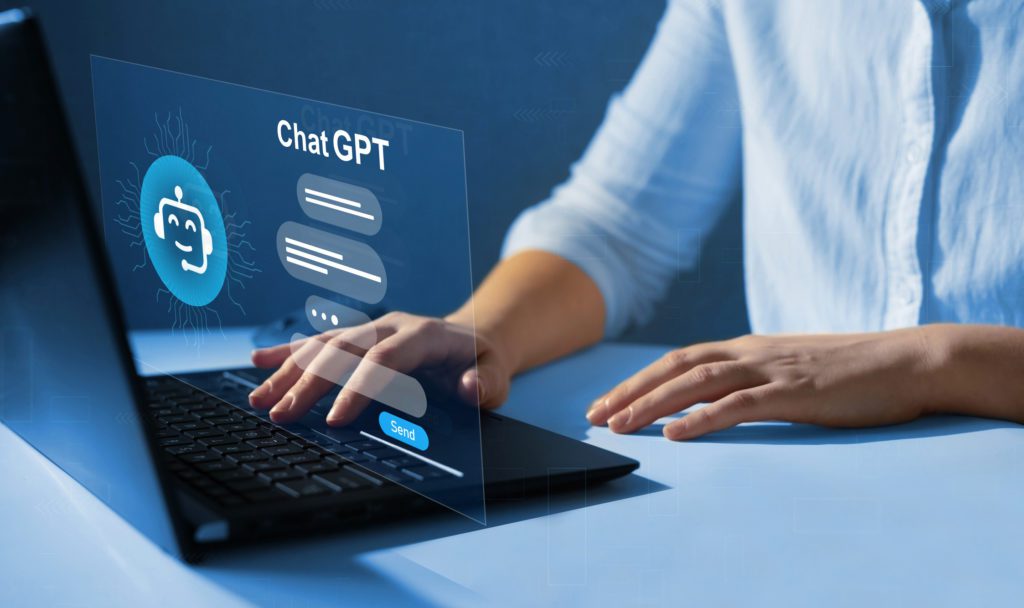15 AI and GPT Benefits, Strategies, and Best Practices for IT Technology Leaders
In this article, I’ll explore some of the most exciting uses for AI and GPT, including customer experience, business operations, and data-driven decision-making.
I’ll also provide a few tips on getting started using AI and GPT and managing some of the challenges you may face.
As a CIO, CTO, or IT leader, it’s critical that you stay informed on the evolving changes taking place in business operations due to AI and GPT technologies.
This article will help you stay ahead of the curve, and the competition with the rapidly expanding opportunities AI and GPT provides.
1. Generate Data-Driven Insights
According to VentureBeat, teams can spend “as much as 80% of their time” preparing data compared to only 20% on modeling and insight generation. AI and GPT transform this cumbersome process. Once you’ve gathered relevant data like customer surveys or sales figures, use GPT to correct date formats or perform time-based math operations. Then you can develop your model to analyze the information and generate insights. GPT recognizes patterns, correlations, and trends from large datasets.
2. Develop Predictive Analytics
IBM says, “an organization that knows what to expect based on past patterns has a business advantage in managing inventories, workforce, marketing campaigns, and most other facets of operation.” Indeed, CIOs and CTOs can use predictive modeling tools to forecast outcomes and demonstrate value across multiple departments. AI-based GPT generates predictions, summarizes data trends, and answers questions.
GPT use cases for predictive analytics include:
- Forecast inventory
- Manage equipment maintenance
- Predict customer demand or behavior
- Develop credit risk models
- Set product or service prices
- Oversee resources
3. Improve Customer Service and Support
Excellent customer service can differentiate your company from competitors. However, client support services are expensive. As a language prediction model, GPT can be used to answer questions, including non-English queries and responses. Consequently, it’s a popular application for chatbots and virtual assistants. GPT’s sophisticated natural language understanding lets it create human-like, accurate replies, meaning your clients may not even realize they’re interacting with a machine.
Moreover, you can use AI and GPT to analyze customer feedback. It examines the sentiment of the text to determine whether the client feels positive or negative about your brand. This use case allows companies to personalize communications and respond quickly to customer inquiries without significantly increasing customer support staff sizes.
4. Deliver Personalized Experiences
Personalization is key to improving customer outcomes and business performance. It helps brands build trust and relationships. According to McKinsey & Company, “71% of consumers expect companies to deliver personalized interactions, and 76% get frustrated when this doesn’t happen.” GPT can tailor customer-facing content for individual consumers and assist with developing client profiles.
Use GPT to personalize your:
- Product recommendations
- Targeted advertisements
- Customer service responses
- Frequently asked question (FAQ) pages
- Email newsletter, blog, or downloadable content
5. Use AI and GPT to Create New Revenue Streams
Whether you want to design new products and services or break into a different market, GPT can help. It supports competitive, product or service, and market research. Suppose your business wants to offer a new service. With GPT, you can analyze large volumes of data to identify patterns and trends in a competitor’s activities. Or identify trends by assessing competitor blog posts, websites, and social media content.
Likewise, GPT can assist with generating product ideas and discovering topics and trends that are relevant to a particular market. It uses text-based data to understand product and service preferences, allowing businesses to reduce risks in launching new revenue streams.
| Before embarking on a new AI or GPT strategy, remember to evaluate your existing infrastructure like your cloud computing resources, Internet bandwidth, software, and data storage and security. If you need assistance in evaluating or upgrading your infrastructure, contact Cox Business. Learn more |
6. Support Business Agility
The ability to adapt quickly enables businesses to remain competitive and relevant. Organizational agility can improve financial performance by 15% or more and increase efficiency, employee engagement, and operational performance by 30%. GPT supports this flexibility with machine learning and robotics tools for identifying trends and developing new products.
GPT-based agile transformation efforts help your business:
- Adjust to market and internal changes
- Adapt to customer behavioral shifts and trends
- Respond to customer needs
- Take advantage of new opportunities
7. Enhance Collaboration
Teamwork is critical to business success. Yet, generational and geographic differences can hinder employee collaboration. GPT-3 facilitates team collaboration in multiple ways. It provides an AI-powered virtual environment, allowing workers to access the same data and resources regardless of location. GPT’s natural language processing capabilities translate content into an employee’s native language and can help clarify hard-to-understand ideas, which is perfect for global organizations.
In addition, GPT can summarize conversations or meetings automatically, keeping everyone on the same page. And when it comes to assigning tasks and tracking progress, GPT stands out for its automation tools. In short, using GPT streamlines your collaborative process while reducing misunderstandings.
8. Optimize Operations
Companies that make the most effective use of AI and GPT can bridge silos and decrease costs. Indeed, “65% of leaders are modernizing IT platforms and systems to optimize business processes,” according to a ServiceNow and ThoughtLab survey. GPT supports automation, allowing organizations to rely less on manual labor, including data entry, software testing, and data analysis.
Use GPT to generate models for:
- Customer segmentation, retention, and engagement
- Inventory and demand forecasts
- Software bug and error detection
- Routing and scheduling improvements
- Pricing models
- Data summarization
- Automated data entry and analysis
- AI-based chatbots
- Business report creation
- Email responses
9. Increase Risk Management Capabilities
Using GPT-3 for risk management can help organizations identify and manage risks more effectively. First, you can use GPT-3 to pinpoint potential risks by predicting future events or outcomes. It can look at individual data, financial markets, or cybersecurity threats, allowing businesses to maintain consistency in their risk management programs.
Along with estimating risks, GPT-3 can analyze the impact of threats. It will simulate how different events or outcomes could influence your operations and financial performance. From there, you can use GPT-3 to generate reports on potential risks with recommendations on how to address them. Finally, GPT-3 can monitor and evaluate the effectiveness of risk management strategies. It tracks changes and trends in an organization’s risk profile over time, allowing companies to adjust and improve their risk management strategies.
10. Build Intelligent Applications Using AI and GPT
Intelligent applications are computer apps that use AI algorithms to perform specific tasks. Examples of intelligent applications include robotics, virtual or augmented reality, and machine learning. These tools are designed to act as if they are thinking and can make decisions based on the data they process.
Leaders use AI and GPT to develop intelligent applications that respond to customer questions or facilitate employee collaboration. It can also generate code, decreasing development time and improving accuracy. With low-code tools growing in popularity, GPT’s capabilities can improve user experiences, resulting in satisfied workers and customers.
11. Achieve Marketing KPIs While Reducing Costs
Many organizations cut back on marketing to save money during the pandemic. However, GPT’s natural language processing capabilities help your company create content at scale. It can generate content, analyze customer data, and share insights. By building AI and GPT into marketing workflows, your teams can reach key performance indicators (KPIs) sooner and use data to adjust their approach to meet consumer expectations in real-time.
With GPT, you can improve your marketing endeavors by:
- Understanding customer intent and preferences
- Incorporating client feedback
- Segmenting marketing campaigns
- Personalizing emails
- Creating AI-generated social media posts
- Completing A/B testing
- Optimizing targeting tactics
- Tracking campaign effectiveness
- Draft landing and website pages
12. Improve Decision-Making
CIOs, CTOs, and IT leaders must evaluate critical factors and variables for strategic planning. However, human error can decrease insight accuracy, and decision-making slows when executives encounter vast amounts of data. AI and GPT-3 reduce the need for manual data gathering, analysis, and interpretation, thus saving time and resources.
You can use it to summarize text, condensing lengthy documents into a few sentences or paragraphs. Also, it can recognize patterns, correlations, and trends used to inform strategic planning, resource allocation, and other business decisions. Leaders can quickly make decisions with deeper insights and improved accuracy to ensure desired outcomes.
13. Find and Onboard Employees Quickly
ManpowerGroup reports, “75% of companies have reported talent shortages and difficulty hiring.” GPT can ease these pain points through data analysis, automation, and conversational AI capabilities. Since GPT has many use cases, organizations can use it to assist recruiters, human resource departments, and business leaders.
Here are ways to use GPT for hiring and onboarding:
- Assess candidate qualifications: Use GPT-3 to read and process resumes. It can filter out those that don’t meet the requirements of a given job.
- Identify and rank applicants: GPT-3 can look at information about new and past candidates, including interview data, and suggest or rank applicants according to your parameters.
- Analyze candidate responses to interview questions: Determine suitability using GPT-3 to assess candidates’ answers and generate a detailed report on their performance.
- Create recruiting materials: Increase interest with personalized emails, flyers, brochures, media advertisements, and informational sheets.
- Develop job ads and descriptions: GPT-3 can create detailed job descriptions that accurately communicate the job requirements, responsibilities, and company culture.
- Use virtual assistants to improve hiring and onboarding experiences: AI technologies like GPT-3 can automatically schedule interviews with qualified candidates, answer questions from applicants, and decrease time spent onboarding.
14. Achieve Company-Wide Training Objectives
With 87% of surveyed corporations experiencing or expecting to have skills gaps, a company’s ability to find skill gaps and upskilling opportunities can be a game-changer. In addition, leaders should explore affordable ways to train employees and ensure they get the most out of their program. GPT-3 supports personalized learning paths with custom training materials, such as instructional videos and manuals. These can be tailored to individuals and job roles, giving each team member the resources to learn new skills, improve existing ones, and gain a deeper understanding of the topics they’re studying.
GPT can produce interactive exercises for evaluating worker skills, such as quizzes or custom assessments. Its natural language understanding allows it to develop data insights that identify areas where employees need further instruction and predict future workforce requirements. Lastly, GPT-3 generates personalized feedback for users to help them further their learning. This feedback can include recommendations on what to learn next, tips on improving, and more.
15. Strengthen Your Cybersecurity Program
Cybersecurity is a challenge for IT professionals. However, GPT-3 has the potential to revolutionize online security tools. Its automation and threat detection abilities can improve an organization’s preparedness and response. For instance, one application of GPT-3 for cybersecurity is in the area of malware detection. You can use it to identify malicious code by analyzing the text of executable files and identifying suspicious patterns.
GPT can also detect vulnerabilities in applications and systems by examining the source code and searching for known patterns of malicious activity. Network security is another use case. GPT can analyze traffic patterns on networks or systems and flag unusual behavior. Its automation capabilities help companies streamline security tasks, such as patching, incident response, and threat detection. Also, GPT can review system logs and send alerts to information security teams.
Prepare Your Organization for GPT
Once you understand the technology and identify use cases for AI and GPT, define your approach by choosing the most beneficial strategies and tactics. Consider establishing a team to oversee AI and GPT implementation and develop a plan for integration.
| Before embarking on a new AI or GPT strategy, remember to evaluate your existing infrastructure like your cloud computing resources, Internet bandwidth, software, and data storage and security. If you need assistance in evaluating or upgrading your infrastructure, contact Cox Business. Learn more |
- Unlocking AI Potential: The Critical Role of High-Speed Connectivity in Modern Workflows - April 9, 2025
- Driving Innovation in State and Local Government: The Essential Role of High-Speed Connectivity - April 9, 2025
- Enhancing the Digital Customer Experience: The Role of IT in Driving Customer Engagement - April 2, 2025


![Top 5 Reasons To Review Your Business ISP [Infographic]](https://www.coxblue.com/wp-content/uploads/2013/10/isp_review.jpg)
